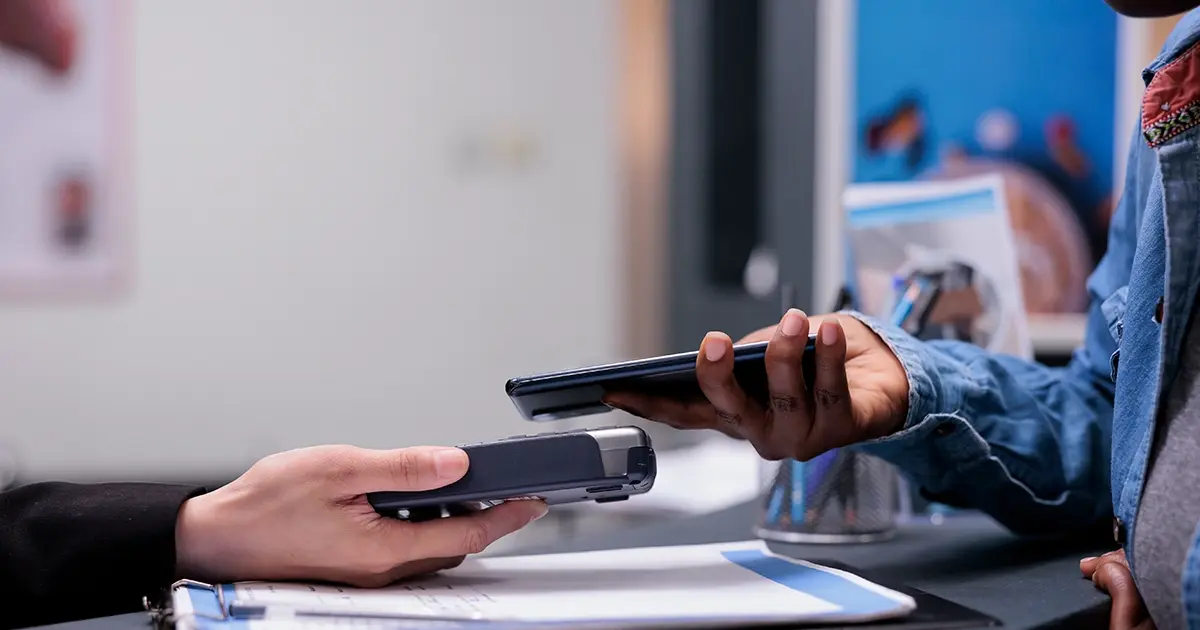ISO 20022
Standards are critical when initiating financial transactions and reporting financial activity. An international standard, like ISO 20022, simplifies interoperability between service providers and clients and enables the efficient, consistent and secure exchange of files.

What is ISO 20022?
ISO 20022 describes a common platform for message development. Developed in 2004, it is a standardisation approach that’s in the process of being adopted by all financial institutions for payments, securities, trade services, cards, and foreign exchange.
As a flexible framework, the ISO 20022 financial messaging standard provides an internationally agreed-upon business message syntax. User organisations and developers use the same message structure, form and meaning to exchange transaction information globally across all major currencies.
The standardisation includes:
- A modelling methodology to capture business transactions and associated message flows in a syntax-independent way
- A central dictionary of business items used in financial communications
- A set of XML and ASN.1 design rules to convert the message models into XML or ASN.1 schemas
Financial services organisations in more than 70 countries, including the US, China, Japan, Switzerland and the UK adopted the ISO 20022 standard. ISO 20022 adoption is expected to be universal by November 2025, when SWIFT is scheduled to retire its existing MY message standard for the ISO standard MX format.
Why is ISO 20022 important?
ISO 20022 is vital to instant payments and plays an important role in the overall modernisation of payment processes.
ISO 20022 messages provide a structured, data-rich common language readily exchanged among corporations and banking systems. This capability is the foundation for moving from end-of-day batch file processing to real-time payment processing.
Additionally, ISO 20022 messages provide the opportunity for enhanced analytics, which can offer valuable new payment services to the customers and clients of all financial industry players.
ISO 20022 involves processing larger data volumes than conventional legacy formats. Hence, bank systems and databases must be capable of processing these larger volumes at higher speeds.
This includes cross-border payments, real-time payments, daily liquidity management, compliance checks, and fraud detection and prevention.
How does ISO 20022 work?
ISO 20022 messages are developed using a methodology that includes a business model, a message model and an XML schema. The process begins with creating a business model that identifies the business processes and the required information.
This model is then translated into a message model that defines the message's structure and components. Finally, the message model is converted into an XML schema, specifying the message's syntax—XML is a flexible and widely used format that supports complex data structures and ensures compatibility across different systems.
Lastly, ISO 20022 messages are designed to be modular, meaning they can be adapted to various business needs by including only the necessary components. This allows for flexibility and scalability.
Benefits of ISO 20022
Adopting ISO 20022 benefits the entire payments ecosystem, including banks, market infrastructures, and bank customers, for corporations and financial institutions alike.
Here are a few of the benefits of adoption of ISO 20022:
- Enriched data. About ten times more data about each payment can be sent, including the purpose of the payment, the source and the ultimate beneficiary. This helps provide organisations and financial institutions with higher levels of transparency and efficiency.
- Reduced payment delays. Adopting dedicated returns and investigation messages and using standard return codes will drastically reduce delays in applying returned funds back to customers and responding to inquiries from other banks.
- Augmented reconciliation capabilities. Customers will have greater reconciliation capabilities by maintaining dedicated reference fields that remain unaltered in the end-to-end payment journey and introducing structured remittance data.
- Message harmonisation. With a universal message type for all payments across the entire payment industry, ISO 20022 creates more interoperability between payment systems worldwide.
- Flexibility. ISO 20022 is more easily adaptable than current messaging standards, making it more responsive to emerging technologies, changes in the economy and innovation.
- Compliance and regulation. With richer data, businesses have improved fraud prevention measures to target financial crime better.
- Efficiency. The standardisation of messages leads to more efficient processing of transactions, reducing errors and manual interventions.
Challenges of implementing ISO 20022
Implementing ISO 20022 presents several challenges, particularly due to its comprehensive nature and the significant changes it entails for financial institutions.
Here are some key challenges:
- Complexity and scope: ISO 20022 covers a wide range of financial services, meaning institutions must address multiple areas simultaneously. Additionally, the standard’s detailed data models and XML schemas require extensive understanding and adaptation, which can be complex and resource-intensive.
- Technical implementation. Existing IT systems may need substantial upgrades or replacements to handle ISO 20022 messages involving intricate data structures and formats. Integrating new standards with legacy systems can be challenging, requiring compatibility solutions to ensure smooth data interchange.
- Data migration and management. Converting existing data formats to ISO 20022 involves complex mapping processes to ensure data integrity and accuracy. Ensuring high-quality, consistent data across all systems necessitates comprehensive data cleansing and validation processes.
- Operational disruption. Implementing ISO 20022 may necessitate business process changes and workflow, potentially disrupting operations. Staff need to be trained on the new standards and procedures, which can be time-consuming and require substantial effort.
- Cost. The upfront costs for system upgrades, training and process changes can be significant. Maintaining compliance with the evolving standard requires ongoing investments in technology and personnel.
- Regulatory and compliance. Different regions may have specific regulatory requirements for ISO 20022 implementation, necessitating careful alignment and compliance efforts. As ISO 20022 evolves, institutions must stay updated with the latest changes and ensure continuous compliance.
- Market and industry collaboration. Successful implementation requires collaboration among various stakeholders, including banks, payment systems and technology providers, which can be challenging to coordinate.
- Security concerns. The rich data from ISO 20022 messages necessitates robust security measures to protect sensitive financial information. Institutions must ensure that their implementation meets relevant security standards and regulations.
ISO 20022 represents a significant advancement in financial messaging standards, offering numerous benefits regarding interoperability, efficiency and data quality. Its global adoption is set to transform how financial institutions and fintech solutions communicate and process transactions.
Further reading
Check out these resources to learn more about ISO 20022 and its role in people-centric innovation.

IFX Payments: Utilising Financial Services in B2B Cross-Border Payments
Listen to this episode of Payment Talks to learn how fintechs, like IFX Payments, are positioning themselves as partners with their B2B customers to help give a competitive advantage for cross-border payments.
Listen to the podcast
